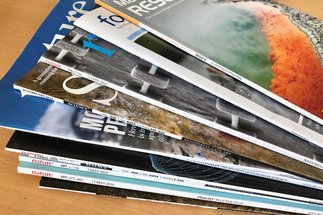Mechanisms of Spatial Organisation
Dr. Seán Murray
Research Area
Spatial organisation is critical for all life. Many cellular processes such as chromosome segregation, cell division and motility require the timely positioning of proteins or chromosomal loci to specific locations within the cell and this is just as true for bacteria as it is for eukaryotes. Such spatial organisation is often due to the presence of existing cellular landmarks or spatial cues but there are many examples in which proteins or DNA appear to be actively and dynamically positioned to specific locations. This occurs in spite of the homogenising effect of diffusion.
We use bacteria as tractable model systems in which to uncover the principles and mechanisms underlying such organisation. To this end, we use mathematical modelling and stochastic simulations combined with live-cell experiments and genetics in a multi-disciplinary and systems approach. The fundamental principles we uncover will help our understanding of self-organisation across all living systems.
Selected Publications
Köhler, R. C.; Murray, S. M.: Putting the Par back into ParABS: Plasmid partitioning driven by ParA oscillations. bioRxiv: the preprint server for biology, 2023.10.16.562490 (2023)
Sadhir, I.; Murray, S. M.: Mid-cell migration of the chromosomal terminus is coupled to origin segregation in Escherichia coli. Nature Communications 14 (1), 7489 (2023)
Köhler, R.; Sadhir, I.; Murray, S. M.: ★Track: Inferred counting and tracking of replicating DNA loci. Biophysical Journal 122 (9), pp. 1577 - 1585 (2023)
Connolley, L.; Schnabel, L.; Thanbichler, M.; Murray, S. M.: Partition complex structure can arise from sliding and bridging of ParB dimers. Nature Communications 14 (1), 4567 (2023)
Subramanian, S.; Murray, S. M.: Subdiffusive movement of chromosomal loci in bacteria explained by DNA bridging. Physical Review Research 5 (2), p. 023034 (2023)
Köhler, R.; Kaganovitch, E.; Murray, S. M.: High-throughput imaging and quantitative analysis uncovers the nature of plasmid positioning by ParABS. eLife 11, e78743 (2022)
Connolley, L.; Szczepaniak, J.; Kleanthous, C.; Murray, S. M.: The quantitative basis for the redistribution of immobile bacterial lipoproteins to division septa. PLOS Computational Biology 17 (12), p. e1009756 (2021)
Subramanian, S.; Murray, S. M.: Pattern selection in reaction diffusion systems. Physical Review E 103 (1), 012215 (2021)
Hofmann, A.; Makela, J.; Sherratt, D. J.; Heermann, D.; Murray, S. M.: Self-organised segregation of bacterial chromosomal origins. ELIFE 8, e46564 (2019)
Guzzo, M.; Murray, S. M.; Martineau, E.; Lhospice, S.; Baronian, G.; My, L.; Zhang, Y.; Espinosa, L.; Vincentelli, R.; Bratton, B. et al.; Shaevit, J.; Molle, V.; Howard, M.; Mignot, T.: A gated relaxation oscillator mediated by FrzX controls morphogenetic movements in Myxococcus xanthus. Nature Microbiology
3 (8), pp. 948 - 959 (2018)
Murray, S. M.; Sourjik, V.: Self-organization and positioning of bacterial protein clusters. Nature Physics 13 (10), pp. 1006 - 1013 (2017)
Murray, S. M.; Panis, G.; Fumeaux, C.; Viollier, P. H.; Howard, M.: Computational and genetic reduction of a cell cycle to its simplest, primordial components. PLoS Biol 11 (12), p. e1001749 (2014)




